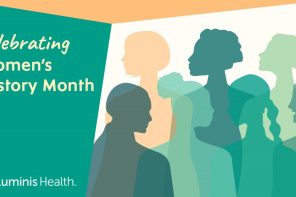At 44, Lynne Powell never suspected a heart attack was coming. For many who know her, it was an astounding wake-up call.
The Severna Park mother of two had been a fitness instructor for 15 years. Her blood pressure and cholesterol were normal. Yet one morning she woke with pain in her jaw and a bit of tightness in her chest. She went about her routine and saw her children off to school, but something didn’t feel right. Powell went online to research her symptoms. Surprised to find they met the criteria for heart attacks in women, she called a friend, who insisted that she call 911.
“It wasn’t the typical heart attack victim,” Powell says. “And I didn’t want to be overreacting.” But she wasn’t overreacting—she was having a heart attack.
“It’s a common misconception that people who are physically very fit cannot develop heart disease,” says Marco Mejia, MD, interventional cardiologist with AAMC, who treated Powell that day. According to Dr. Mejia, women tend to delay treatment because their symptoms can differ from classic male heart attack signs. Women may feel unusually fatigued or have shortness of breath or a general feeling of being unwell.
Powell’s ambulance team performed an electrocardiogram, and when she arrived at the AAMC emergency department, she was rushed to the cardiac catheterization lab for an emergency coronary angiogram. The imaging allowed Dr. Mejia to see that her arteries were narrowed across a broad area with no localized blockage to clear, so he determined that medication was the best treatment.
The rapid response and quick diagnosis is part of a program called C-PORT, which AAMC adopted nearly 10 years ago. It requires a specialized team of physicians, nurses, and radiologic technologists who are on call 24 hours a day to rapidly evaluate and diagnose cardiac patients.
“The C-PORT program saves lives,” Dr. Mejia says. “It also improves outcomes by minimizing damage to the heart, which, in turn, improves long-term health.” Dr. Mejia attributes the program’s success to the collaboration of emergency medical services in the field, the AAMC emergency department staff, the catheterization lab, and interventional cardiologists. Their quick diagnosis and rapid response made all the difference for Powell.
Eight weeks after her heart attack, Powell returned to fitness instruction and recently added Zumba to her repertoire. “A heart attack was never a consideration for our family,” says her husband, Mark. “It has continued to be a reminder of how fragile and precious our lives are.”
I joined AAMC’s philanthropy council for the Heart and Vascular Institute about two years ago. We’re raising money to build a new heart station in the hospital. The current station was designed years ago, but it’s grown a lot in the last ten years. More than 200,000 patients get cardiac care and testing through the heart and vascular unit. So, they want to make the heart station bigger and improve the infrastructure, and consolidate it all in one place.
My husband joined the philanthropy council with me, and now he’s on the Foundation Board of the Hospital. He’s someone who believes in paying it forward. He feels that if you have opportunities and resources that you can share with other people then he wants to do that. Obviously, the hospital saved my life, so it’s important to us.



